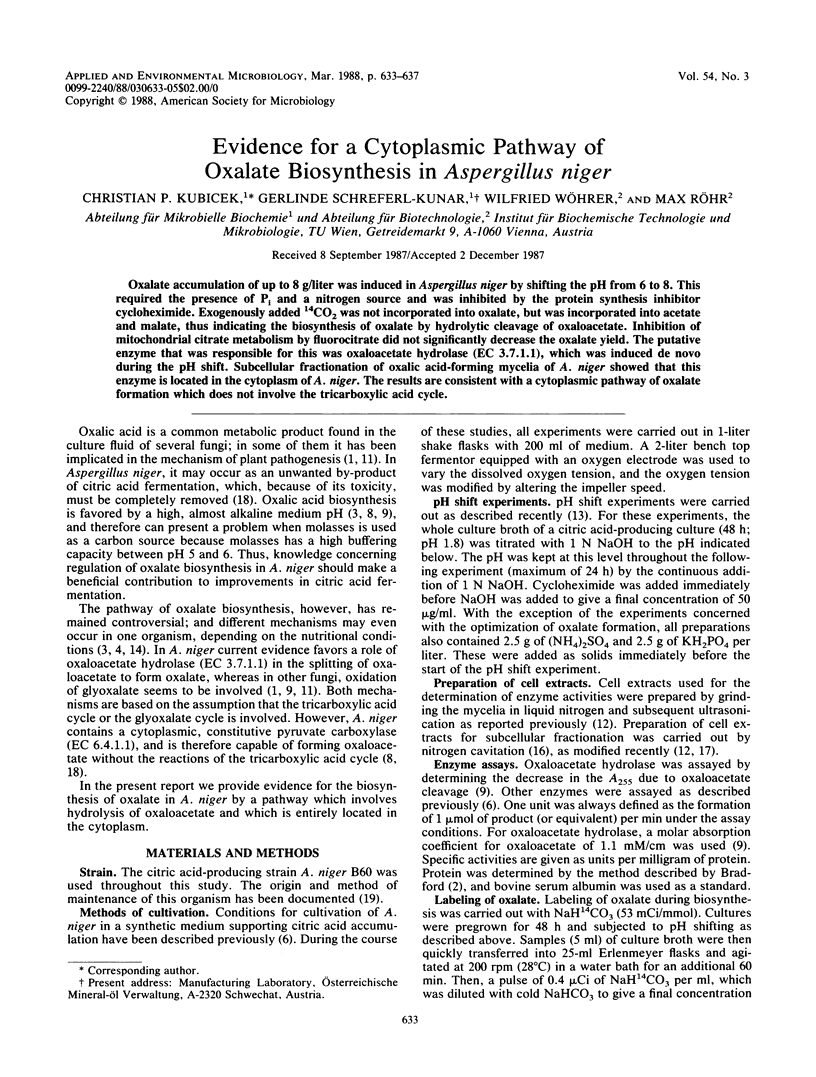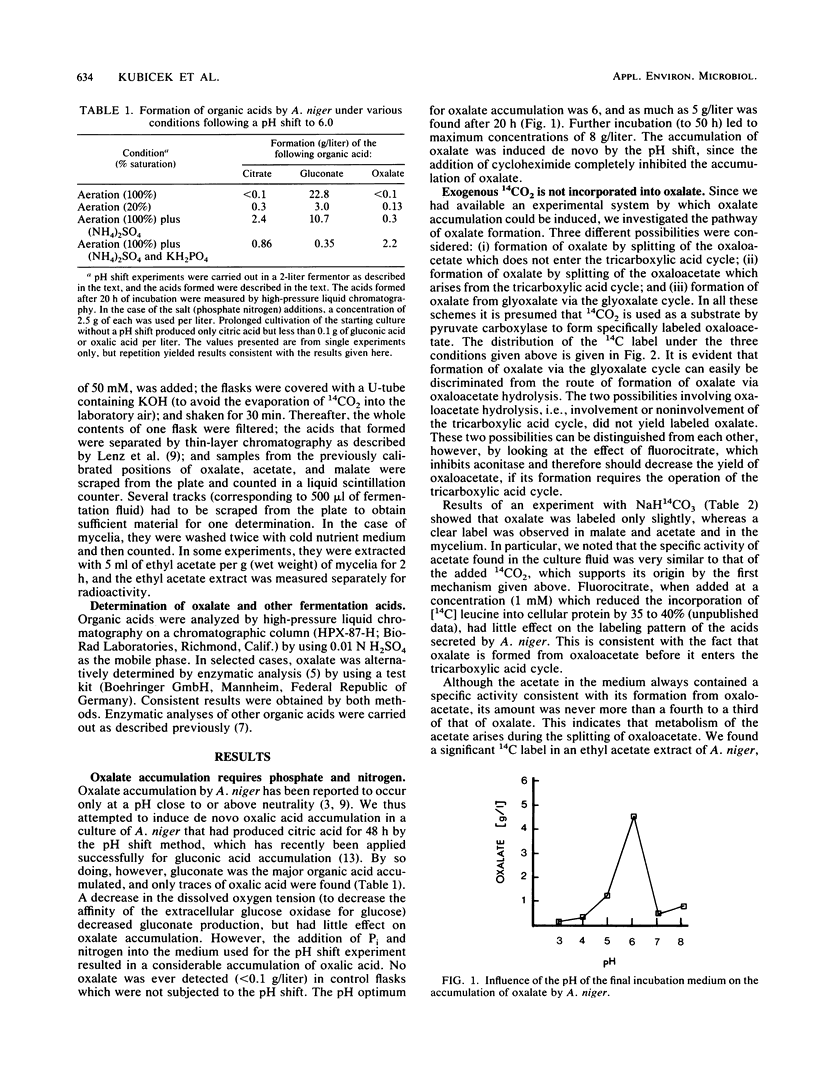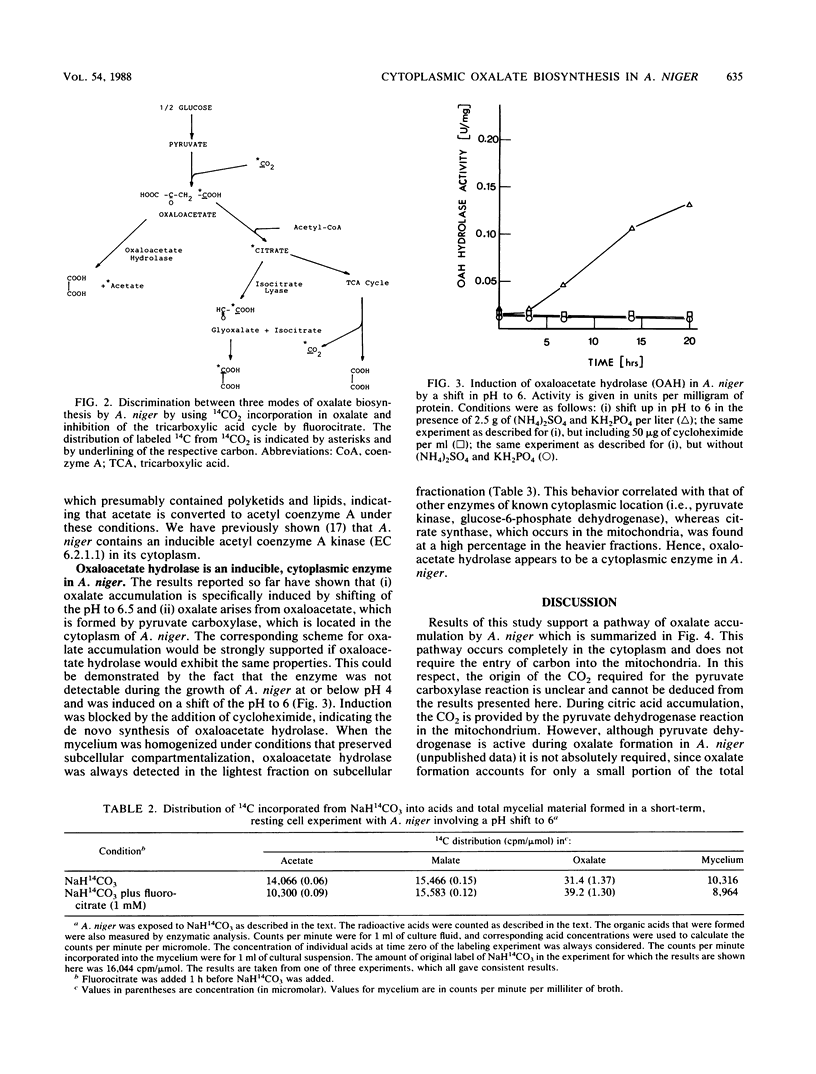Abstract
Oxalate accumulation of up to 8 g/liter was induced in Aspergillus niger by shifting the pH from 6 to 8. This required the presence of Pi and a nitrogen source and was inhibited by the protein synthesis inhibitor cycloheximide. Exogenously added 14CO2 was not incorporated into oxalate, but was incorporated into acetate and malate, thus indicating the biosynthesis of oxalate by hydrolytic cleavage of oxaloacetate. Inhibition of mitochondrial citrate metabolism by fluorocitrate did not significantly decrease the oxalate yield. The putative enzyme that was responsible for this was oxaloacetate hydrolase (EC 3.7.1.1), which was induced de novo during the pH shift. Subcellular fractionation of oxalic acid-forming mycelia of A. niger showed that this enzyme is located in the cytoplasm of A. niger. The results are consistent with a cytoplasmic pathway of oxalate formation which does not involve the tricarboxylic acid cycle.
Full text
PDF




Selected References
These references are in PubMed. This may not be the complete list of references from this article.
- Balmforth A. J., Thomson A. Isolation and characterization of glyoxylate dehydrogenase from the fungus Sclerotium rolfsii. Biochem J. 1984 Feb 15;218(1):113–118. doi: 10.1042/bj2180113. [DOI] [PMC free article] [PubMed] [Google Scholar]
- Bradford M. M. A rapid and sensitive method for the quantitation of microgram quantities of protein utilizing the principle of protein-dye binding. Anal Biochem. 1976 May 7;72:248–254. doi: 10.1006/abio.1976.9999. [DOI] [PubMed] [Google Scholar]
- Lenz H., Wunderwald P., Eggerer H. Partial purification and some properties of oxalacetase from Aspergillus niger. Eur J Biochem. 1976 May 17;65(1):225–236. doi: 10.1111/j.1432-1033.1976.tb10409.x. [DOI] [PubMed] [Google Scholar]
- Meixner-Monori B., Kubicek C. P., Harrer W., Schreferl G., Rohr M. NADP-specific isocitrate dehydrogenase from the citric acid-accumulating fungus Aspergillus niger. Biochem J. 1986 Jun 1;236(2):549–557. doi: 10.1042/bj2360549. [DOI] [PMC free article] [PubMed] [Google Scholar]
- Müller H. M., Frosch S. Oxalate accumulation from citrate by Aspergillus niger. II. Involvement of the tricarboxylic acid cyclase. Arch Microbiol. 1975 Jun 22;104(2):159–162. doi: 10.1007/BF00447318. [DOI] [PubMed] [Google Scholar]
- Osmani S. A., Scrutton M. C. The sub-cellular localisation of pyruvate carboxylase and of some other enzymes in Aspergillus nidulans. Eur J Biochem. 1983 Jul 1;133(3):551–560. doi: 10.1111/j.1432-1033.1983.tb07499.x. [DOI] [PubMed] [Google Scholar]
- Pfitzner A., Kubicek C. P., Röhr M. Presence and regulation of ATP:citrate lyase from the citric acid producing fungus Aspergillus niger. Arch Microbiol. 1987 Feb;147(1):88–91. doi: 10.1007/BF00492910. [DOI] [PubMed] [Google Scholar]


